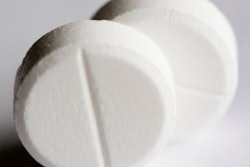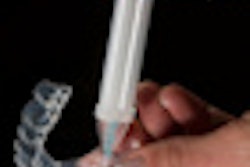
Tooth sensitivity is one of the chief complaints patients have when undergoing tooth whitening. Now a study has found that using a nanohydroxyapatite (n-HAP) paste may significantly reduce the number of days a patient will experience tooth sensitivity during active bleaching (Journal of Esthetic and Restorative Dentistry, August 2012, Vol. 24:4, pp. 268-276).
None of the study authors disclosed a financial interest in any of the companies or products used in this article. However, the project was supported by a grant from Sangi, which makes Renamel AfterBleach, the n-HAP paste used in the study.
Several manufacturers have added desensitizing agents to their dentist-prescribed whitening products, said study author William Browning, DDS, professor of restorative dentistry at the Indiana University School of Dentistry, in an interview with DrBicuspid.com.
“This is the first high-level evidence available to confirm its efficacy.”
Direct-to-consumer whitening agents, by contrast, generally do not contain desensitizers, noted the study authors, adding that their study investigates a desensitizing agent that follows application of the tooth whitener and is used as a separate step.
Because a significant percentage of people whiten their teeth using direct-to-consumer products that do not contain a desensitizer, a product that could reduce sensitivity and be used as an adjunct to bleaching would be of great benefit, explained Dr. Browning.
Whitening-related tooth sensitivity has been associated with the presence of microscopic defects in the tooth structure, and the theory is that occluding/repairing these defects would lead to a reduction in sensitivity, he added.
"Lower-level-evidence lab studies indicating repair of these defects in vitro and anecdotal clinical reports of reduced sensitivity indicated that nanohydroxylapatite was effective," said Dr. Browning. "This is the first high-level evidence available to confirm its efficacy."
Double-blind study
Dr. Browning and his colleagues used a randomized, placebo-controlled, parallel-group, double-blind clinical trial to investigate the efficacy of n-HAP paste in reducing bleaching-related tooth sensitivity. They assigned the n-HAP paste and a placebo to 42 study participants who were divided into two groups of 21 each.
The study participants bleached with a 7% hydrogen peroxide gel twice daily for 14 days. They wore the bleaching agent for 30 minutes, and the desensitizer was applied in a separate step immediately following bleaching. The paste n-HAP -- Renamel AfterBleach -- contained n-HAP crystals. The paste zero-HAP (the placebo) was identical, except that it did not contain the nanosized particles of hydroxyapatite.
The study participants used their assigned desensitizing agent during the two weeks of active bleaching and for one week after the end of active bleaching for five minutes at a time.
Due to concerns about introducing a confounding factor into the study, all participants were warned against using any oral healthcare products that contained a desensitizer.
The study participants maintained a daily diary for four weeks: one week prior to bleaching, during the two weeks of active bleaching, and for the one week after bleaching ended.
Three aspects of tooth sensitivity were investigated: percentage of participants who experienced sensitivity, number of days that sensitivity was experienced, and intensity level of the sensitivity, which was measured on a visual analog scale (VAS). Each of these measures investigates a different aspect of tooth sensitivity and each has value, the study authors noted. They also measured the degree of color change at baseline, immediately after bleaching, and six weeks after the end of active bleaching.
Here are some of the key results:
- For groups zero-HAP and n-HAP, respectively, 51% and 29% of participants reported tooth sensitivity.
- The number of days of sensitivity was 76 for zero-HAP and 36 for n-HAP.
- The change in VAS score from baseline trended higher for the zero-HAP group.
- Color change was equivalent between the groups.
"The data trend indicated group n-HAP experienced less sensitivity over all three measures," noted the study authors.
However, only the number of days of sensitivity was statistically significant.
High-level clinical evidence
Dentists can tell patients who are whitening their teeth with a product that does not contain a desensitizer that n-HAP can be applied after bleaching as an adjunctive therapy, Dr. Browning noted.
There are also plans to incorporate n-HAP into the whitening agent itself, he added.
The results both supported a theory of whitening-related sensitivity and supported the efficacy claims of a commercial product, Dr. Browning noted. For many products, efficacy is assumed based on an extrapolation of lab testing results; that is, that the product will perform in clinical use as it did in lab testing. However, the relevance of such testing to clinical performance is unknown, he added.
"Having high-level clinical evidence to support a product's claims is very reassuring, but it is also unusual," he concluded. "It should be a norm."



















